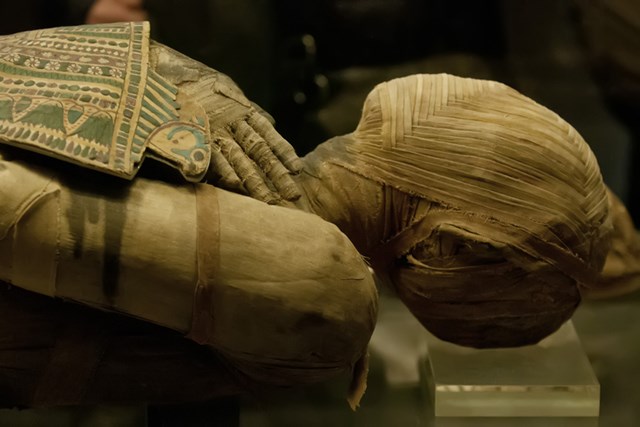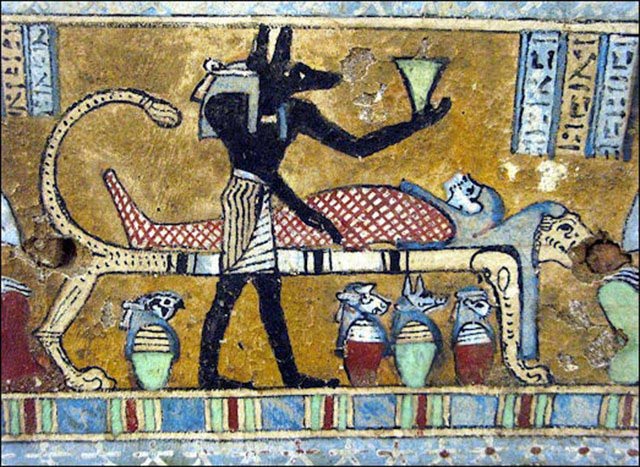The embalming technology of old and present
The mummies kept intact over thousands of years are always attractive topics for scientists.
Mysterious embalming technology ancient and present
Based on the study of ancient texts and previously unearthed mummies, scientists re-conducted the mummification process right in the 21st century in order to have a deeper look, contributing to decoding those The mystery revolves around this amazing technique.

Historically, the embalming process has been collected by researchers from various sources: records of ancient Greek historians, as typical of Herodotus, wall paintings of tombs and tools The ancient people used to embalm each had been excavated before. On the other hand, they also carried out sampling and dissecting real mummies in order to deduce embalming techniques. However, all the evidence collected has not yet solved the mystery of the embalming process. Unanswered questions include How can a volcanic stone knife be accurately slashed into the body? How long does the mummification process last? Are marijuana techniques mentioned in the text really feasible? Fortunately, these questions have been explained through two long-done studies that have just been published in Anatomical Recorrd.
2 mummification trials in the 21st century

The process of mummification is synthesized from a lot of ancient texts, excavated tools and even an ancient mummy surgery.
The first study was conducted in 1994 by Egyptologist Bob Brier and surgical doctor Rob Wade. At that time, they carried out the mummification of the body of a man who donated his body for science . Brier used the embalming process developed at the time of the New Kingdom of Ancient Egypt (1550-1069 BC). This is said to be the most feasible and elaborate mummy method ever known.
First, Brier created Sodium Carbonate in an Egyptian way (mixing Calcium Carbonate with Sodium Bicarbonate), using it to dry and store the body. During the process, they used the same embalming tools with the old people (both in terms of materials and design), and even attached a wooden charm on the dead body after finishing mummification. This corpse is called Mummab - the first case was embalmed according to Egyptian royal techniques from 2000 years ago.
In the second experiment, scientists from Greece and Switzerland also tried to repeat the process of embalming the body. This time, they tried to marinate two legs from the same corpse according to two different methods : using a hot dry cloth to marinate naturally, and use artificial marinated with Sodium Carbonate (similar to Brier's way). The results showed that the hot dry fabric method was not successful and 7 days later, they had to immediately stop the experiment. In contrast, the second leg is marinated with Sodium Carbonate, which is completely marinated successfully after about 208 days.
Important findings

Taking the brain out through the nostril is extremely difficult and terrifying.
Based on 2 studies, marinating the whole body and only 1 leg, researchers have gained more knowledge about the mysterious mummification process. First, Brier discovered that taking the brain through the nostril is extremely difficult. People have to use hooked tools to perform rather disgusting tasks, then pump water into the brain to load up and pour the mixture out.
In the foot massage study, the researchers followed the ancient text's instructions to soak the body in sodium carbonate for 30 to 40 days. The first 30 days passed, the leg still has no sign of successful marinating, although sodium carbonate has prevented bacteria and mold from attacking the muscle. It wasn't until 208 days later that the new leg was successfully marinated. Researchers believe that the results are not as expected because the laboratory has low temperatures and high humidity. Meanwhile for conditions in Egypt, the temperature is high while the air is dry.
Most importantly, the mummified remains in modern times have become a benchmark for comparison with ancient mummies . The entire biography of the Mumbad cadaver and the whole process of mummification were carefully recorded by the researchers. Based on that, other scientists in the world can verify their embalming hypothesis by comparing it with Mumbad. Although the process of mummification is still not as perfect as it used to be, the research efforts have provided more insights, helping to partially remove the mysterious veil surrounding the mummy technique dating back 2000 years. .
- Mummification technology has a life of nearly 6 millennia
- Learn about mummification techniques
- The secret to a long-lasting mummy
- 3 hundred-year comedy contest is more beautiful than life
- Scary of smoked mummies on the cliff
- The mystery of embalming the heads of state
- Reveal the process of embalming the Korean leader
- Mummification techniques in the world
- Another amazing thing about ancient Egyptian civilization
- Affirm the belief of reincarnation
- Team of scientists preserved Lenin's corpse
- Mummy has brain, no heart
 'Fine laughs' - Scary and painful torture in ancient times
'Fine laughs' - Scary and painful torture in ancient times The sequence of numbers 142857 of the Egyptian pyramids is known as the strangest number in the world - Why?
The sequence of numbers 142857 of the Egyptian pyramids is known as the strangest number in the world - Why? History of the iron
History of the iron What is alum?
What is alum?